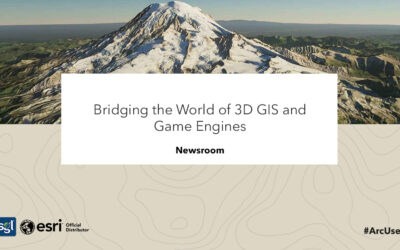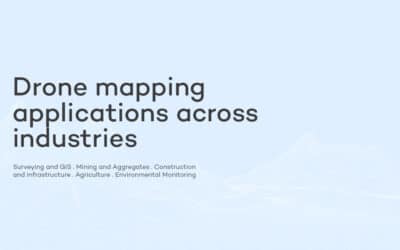Empowering Local Impact with GIS: Advancing the UN Sustainable Development Goals in Nigeria
Introduction
Nigeria, a country of diverse cultures, landscapes, and challenges, is steadfastly pursuing the United Nations Sustainable Development Goals (SDGs) to improve the lives of its people. In this vast nation, the role of Geographic Information Systems (GIS) in empowering local impact becomes even more significant. This blog explores how GIS is instrumental in advancing the SDGs across Nigeria’s diverse regions, including the Southwest, Southeast, South-South, Northeast, Northwest, and North Central.
The Role of GIS in Advancing the SDGs in Nigeria
GIS serves as a unifying technology that can address the unique needs and challenges of each Nigerian region while contributing to the achievement of the SDGs:
- Data-Driven Insights: In Nigeria, data is the foundation of progress. GIS enables the collection and analysis of extensive datasets related to the SDGs, helping identify regional disparities and tailor interventions accordingly.
- Regional Urban Development: GIS assists in urban planning and infrastructure development across Nigeria’s diverse regions. It aids in mapping housing, public services, and transportation networks to optimize resource allocation and improve living conditions, thus contributing to SDG 11 (Sustainable Cities and Communities).
- Environmental Conservation: The unique ecological diversity in Nigeria demands specific approaches for environmental conservation. GIS helps monitor and manage environmental issues like deforestation, pollution, and water scarcity, supporting SDGs 14 (Life Below Water) and 15 (Life on Land).
- Disaster Preparedness: Different regions face various natural disasters. GIS allows for customized disaster risk assessments, early warning systems, and response planning to align with SDG 13 (Climate Action).
- Regional Public Health: Healthcare planning and disease management must consider regional variations. GIS aids in tracking disease outbreaks, optimizing healthcare facility locations, and improving public health outcomes, thus supporting SDG 3 (Good Health and Well-being).
- Community Engagement: Empowering local communities is vital for the SDGs. GIS offers communities access to spatial data, enabling them to advocate for their unique needs and contributing to SDGs such as gender equality (SDG 5) and reduced inequalities (SDG 10).
Case Studies in Regional Impact
- Southwest – Lagos: Addressing Water Scarcity (SDG 6)
Lagos, Nigeria’s most populous and economically vibrant state, faces the critical challenge of water scarcity. In response, GIS technology has been employed to map water sources and manage water resources efficiently. This initiative directly contributes to SDG 6 (Clean Water and Sanitation) by ensuring that water supply and distribution are optimized, promoting equitable access to clean and safe drinking water. By mapping water sources and distribution networks, Lagos is taking significant steps towards improving water quality, reducing waterborne diseases, and ensuring the sustainable management of this vital resource.
- Southeast – Anambra: Ensuring Food Security (SDG 2)
Anambra State, situated in the Southeast region of Nigeria, relies heavily on agriculture for livelihoods. GIS technology is used to optimize agricultural practices, including crop planning and land use. By implementing precision agriculture techniques, Anambra State aims to increase crop yields and improve food security, aligning with SDG 2 (Zero Hunger). GIS enables farmers to make data-informed decisions on crop selection, planting, irrigation, and pest control. Ultimately, this approach enhances agricultural productivity, reduces food waste, and contributes to a more sustainable and food-secure Anambra.
- South-South – Delta: Disaster Preparedness and Climate Action (SDG 11 and SDG 13)
The Delta region of Nigeria faces challenges related to climate change, including increased flood risk and coastal erosion. GIS technology is instrumental in disaster preparedness and response efforts. It allows for the mapping of vulnerable areas and the development of early warning systems, thus contributing to SDG 11 (Sustainable Cities and Communities) by enhancing disaster resilience. Moreover, Delta’s use of GIS aligns with SDG 13 (Climate Action) by helping to monitor and manage climate-related risks. GIS-based climate models and data support Delta in understanding and mitigating the impact of climate change on its communities and ecosystems.

- Northeast – Borno: Humanitarian Efforts and Peacebuilding (SDG 16)
Borno State, located in the Northeast, has been profoundly affected by conflict and displacement due to the activities of insurgent groups. GIS plays a pivotal role in humanitarian efforts in the region. It facilitates the mapping of displaced populations, aiding in the delivery of humanitarian assistance and the establishment of internally displaced persons (IDP) camps. Furthermore, GIS supports peacebuilding initiatives by providing insights into conflict dynamics and contributing to SDG 16 (Peace, Justice, and Strong Institutions). Through data-driven analysis, Borno State authorities and humanitarian organizations can better understand the complex situation and work toward conflict resolution and lasting peace.
- Northwest – Kano: Improving Healthcare Accessibility (SDG 3)
Kano State in the Northwest region is leveraging GIS technology to enhance healthcare accessibility, particularly in rural areas. GIS-based healthcare planning allows for the efficient placement of healthcare facilities, ensuring that underserved communities have better access to essential medical services. This aligns with SDG 3 (Good Health and Well-being) by improving healthcare access and reducing maternal and child mortality rates. Additionally, GIS supports disease surveillance and outbreak response, strengthening public health efforts in Kano State.
- North Central – Plateau: Sustainable Land Management (SDG 14 and SDG 15)
Plateau State, situated in the North Central region, faces challenges related to deforestation and land degradation. GIS technology is harnessed to monitor and manage land resources sustainably. By mapping forests, land cover, and soil erosion, Plateau State can implement targeted reforestation and land conservation efforts. This approach contributes to SDG 14 (Life Below Water) and SDG 15 (Life on Land) by preserving biodiversity, protecting ecosystems, and ensuring the sustainable use of land and water resources. GIS-based land management also supports efforts to combat desertification and land degradation in the state.
These region-specific GIS initiatives in Nigeria are prime examples of how technology can be tailored to address local challenges while advancing the broader goals of the United Nations’ Sustainable Development Agenda. They showcase the power of GIS in fostering sustainable development, enhancing livelihoods, and promoting resilience across diverse regions of Nigeria.
Conclusion
Empowering local impact through GIS is essential for Nigeria’s diverse regions on their journey toward achieving the UN Sustainable Development Goals. By tailoring GIS applications to regional needs, Nigeria can overcome disparities and create meaningful change within communities across the Southwest, Southeast, South-South, Northeast, Northwest, and North Central.
GIS technology serves as a bridge that connects regional challenges to global goals. As Nigeria continues to make strides toward building a more sustainable, equitable, and prosperous future, GIS remains the compass guiding the way, empowering local impact and ensuring no one is left behind in the pursuit of the SDGs.

